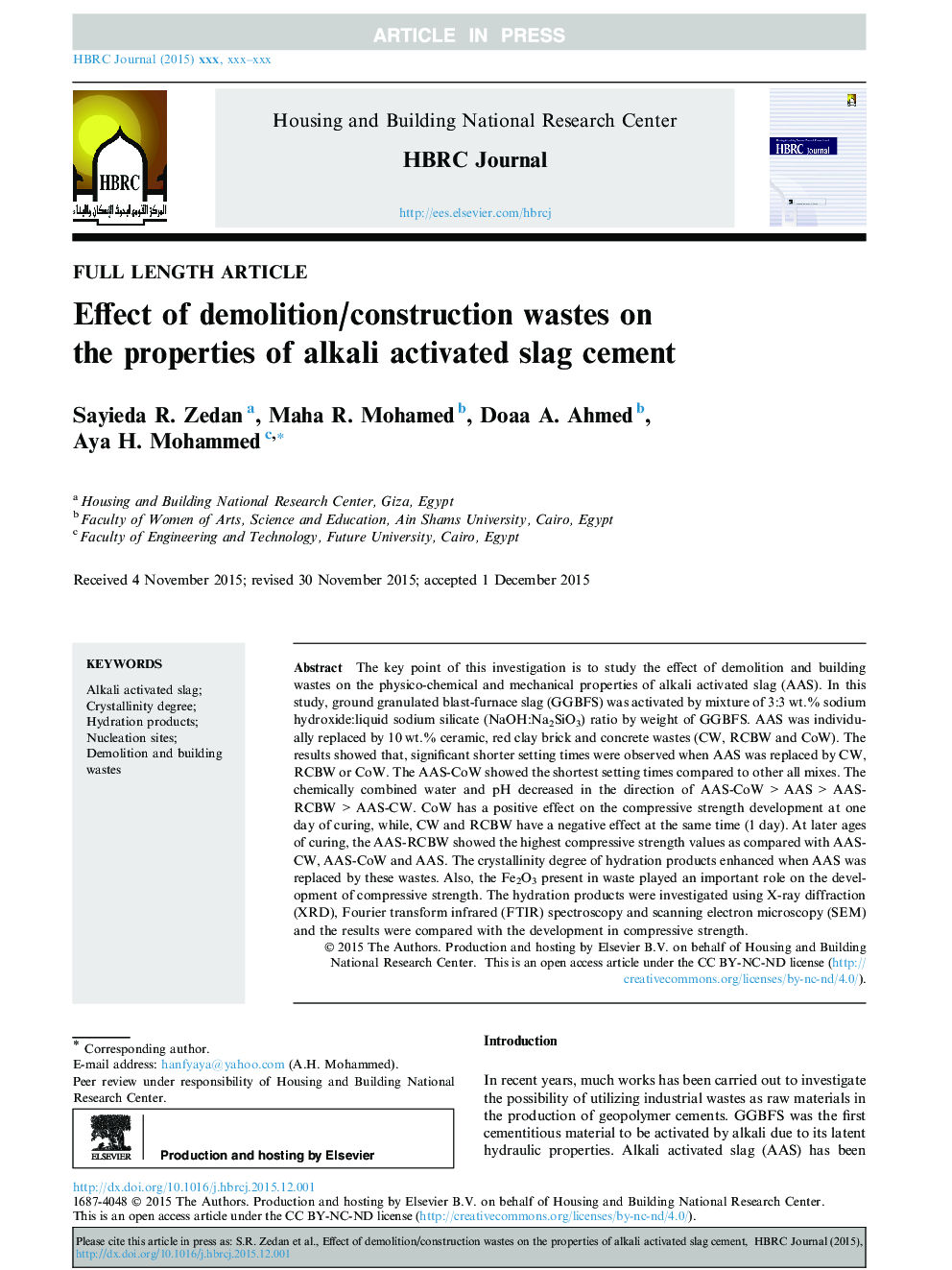| Article ID | Journal | Published Year | Pages | File Type |
|---|---|---|---|---|
| 6747099 | HBRC Journal | 2017 | 6 Pages |
Abstract
The key point of this investigation is to study the effect of demolition and building wastes on the physico-chemical and mechanical properties of alkali activated slag (AAS). In this study, ground granulated blast-furnace slag (GGBFS) was activated by mixture of 3:3Â wt.% sodium hydroxide:liquid sodium silicate (NaOH:Na2SiO3) ratio by weight of GGBFS. AAS was individually replaced by 10Â wt.% ceramic, red clay brick and concrete wastes (CW, RCBW and CoW). The results showed that, significant shorter setting times were observed when AAS was replaced by CW, RCBW or CoW. The AAS-CoW showed the shortest setting times compared to other all mixes. The chemically combined water and pH decreased in the direction of AAS-CoWÂ >Â AASÂ >Â AAS-RCBWÂ >Â AAS-CW. CoW has a positive effect on the compressive strength development at one day of curing, while, CW and RCBW have a negative effect at the same time (1Â day). At later ages of curing, the AAS-RCBW showed the highest compressive strength values as compared with AAS-CW, AAS-CoW and AAS. The crystallinity degree of hydration products enhanced when AAS was replaced by these wastes. Also, the Fe2O3 present in waste played an important role on the development of compressive strength. The hydration products were investigated using X-ray diffraction (XRD), Fourier transform infrared (FTIR) spectroscopy and scanning electron microscopy (SEM) and the results were compared with the development in compressive strength.
Related Topics
Physical Sciences and Engineering
Engineering
Civil and Structural Engineering
Authors
Sayieda R. Zedan, Maha R. Mohamed, Doaa A. Ahmed, Aya H. Mohammed,
